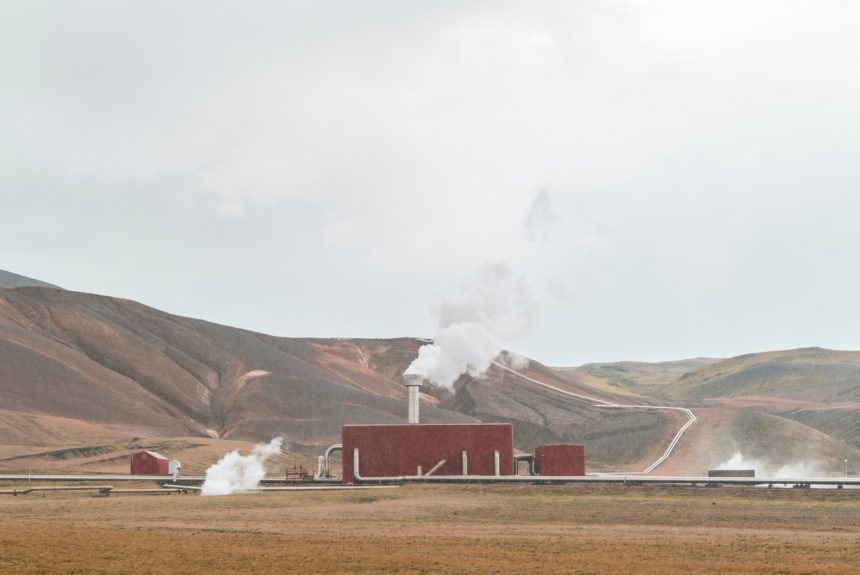Geothermal energy is labeled “America’s untapped energy giant” by the Department of Energy, and for good reason. With lower lifecycle emissions than solar and a greater capacity factor than wind, geothermal is a renewable energy source that can produce abundant energy with very few emissions.
This energy is heat from the earth’s core that is harnessed by drilling deep underground to access water and rock reservoirs that are hotter than 300 degrees Fahrenheit. From there, hot water or steam is extracted, which then powers turbines that generate electricity. This electricity can be used to heat or cool homes.
Currently, geothermal powers about 2 million homes in the United States. Through innovative breakthroughs and licensing reform, it could grow 26-fold in the United States by 2050.
Fact vs. Myth
- Fact: Geothermal energy is safe.
- Myth: Geothermal is land-intensive and harmful to the environment.
- Geothermal power plants use less land per GWh than coal, solar, or wind.
- Fact: Geothermal has tremendous growth potential.
- Myth: Geothermal energy increases the risks of earthquakes.
- AI, smart siting, and tremor tracking all reduce the risk of earthquakes from geothermal.
The Benefits of Geothermal Energy
- Geothermal energy is clean
- The Department of Energy (DOE) classifies geothermal as a renewable energy source.
- Direct use geothermal applications and heat pumps have “almost no negative effects on the environment,” according to the U.S. Energy Information Administration.
- The lifecycle emissions of modern closed-loop geothermal plants are four times less than that of solar PV, and 20 times less than natural gas.
- Geothermal energy is effective and efficient
- Geothermal’s energy capacity is 2-3 times greater than other renewable energy sources such as solar and wind.
- Geothermal power plants can generate power about 90% of the time.
- Geothermal energy is economical
-
- The cost of geothermal is $44/MWh, which is cheaper than solar, hydro, or wind.
- While geothermal heat pumps have greater upfront costs than traditional air source systems, costs can be recouped in 5 to 10 years through energy savings.
-
Markets vs. Mandates
- Regulatory barriers are hindering the deployment of geothermal energy.
- With 90% of geothermal energy potential located on federal lands, new geothermal projects are subject to federal permitting and review under the National Environmental Policy Act (NEPA).
- The National Renewable Energy Laboratory has estimated that NEPA delays geothermal projects by eight years.
- Geothermal energy does not have the same categorical exclusions the oil and gas and renewable energy industries enjoy.
- Categorical exclusions are projects that the Council on Environmental Quality (CEQ) and a federal agency determine have a minimal impact on the environment. They do not require an Environmental Impact Statement (EIS). Not requiring an EIS reduces paperwork, streamlines projects, and lowers project costs.
- With 90% of geothermal energy potential located on federal lands, new geothermal projects are subject to federal permitting and review under the National Environmental Policy Act (NEPA).
- Private sector involvement is leading to innovative approaches to geothermal energy.
- Fervo Energy uses horizontal drilling in tandem with fiber optic sensing, which increases the productivity and life cycle of geothermal wells.
- This method also allows for geothermal energy to be tapped in new places.
- The Calpine Corporation owns the Geysers Reservoir, which is the largest producer of geothermal energy in the world.
- Fervo Energy uses horizontal drilling in tandem with fiber optic sensing, which increases the productivity and life cycle of geothermal wells.
- With regulatory reform, geothermal could expand by 500% with current technologies.
How to Advance Geothermal Energy
- Streamline the environmental review and permitting process under NEPA.
- The Department of Energy estimates that optimizing permitting timelines could at least double geothermal capacity by 2050.
- Grant more categorical exclusions for geothermal.
- Through the Department of Energy, continue research and development of geothermal energy and geothermal technologies.
- Develop a centralized permitting system through the Bureau of Land Management.
Summary
- Geothermal is an underutilized energy source with enormous untapped potential.
- Geothermal is clean, effective, and economically sound.
- Through permitting reform, reducing government barriers, and empowering the private sector, geothermal energy can grow significantly in the United States.


